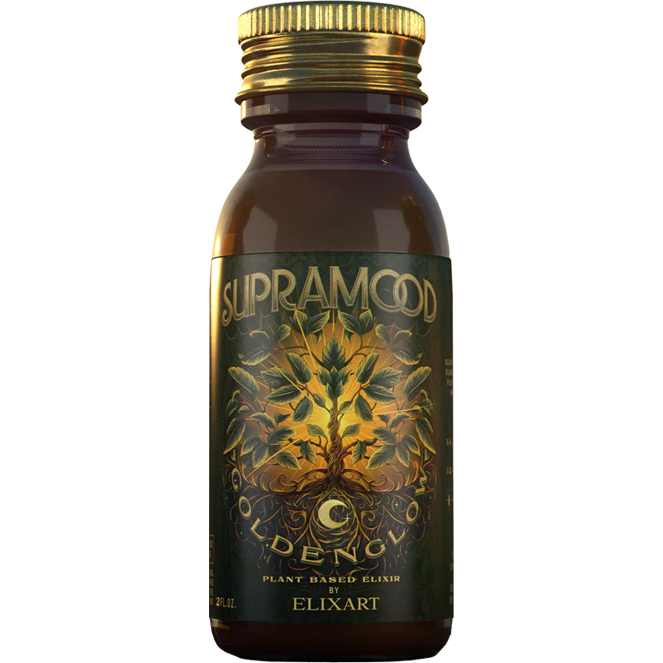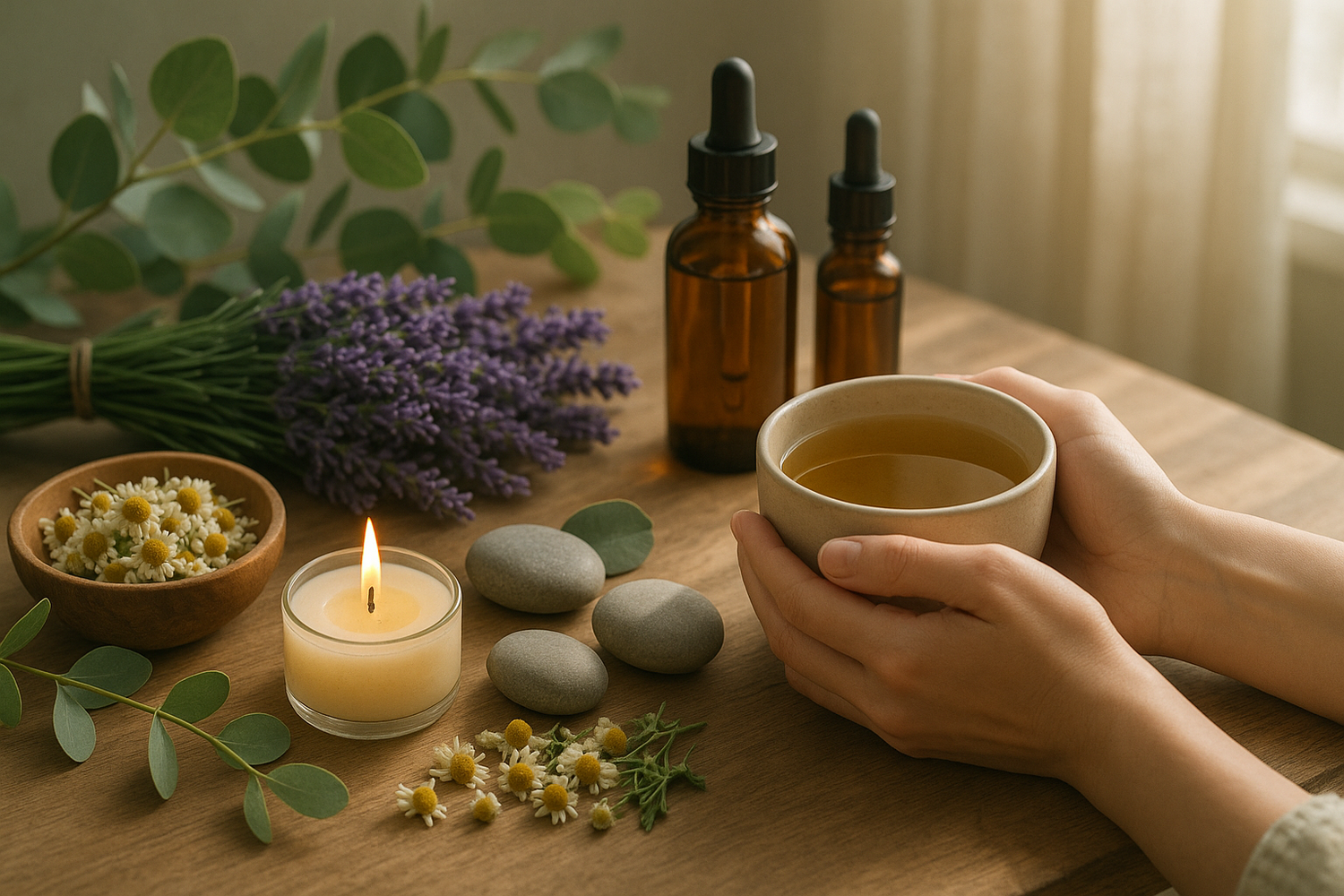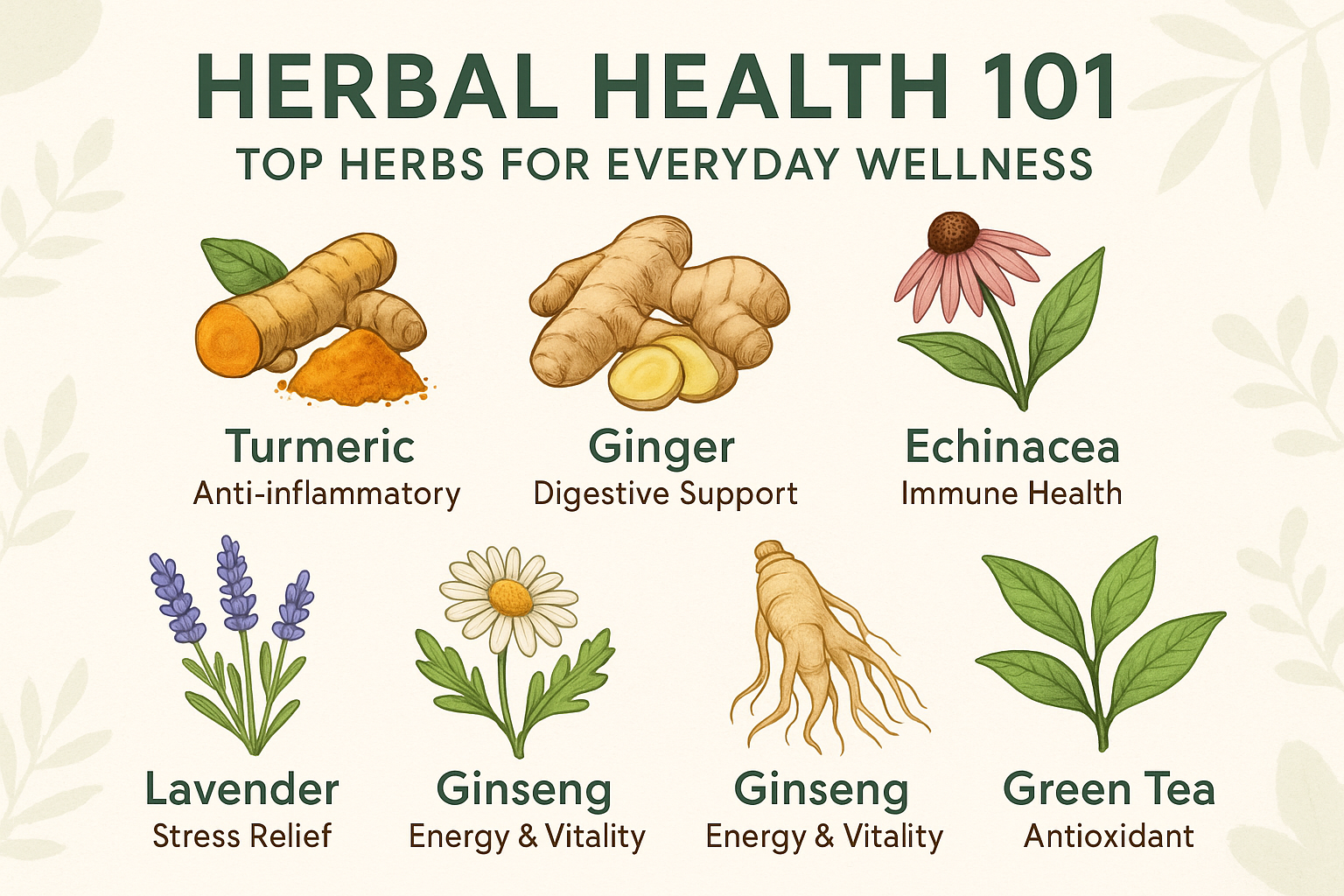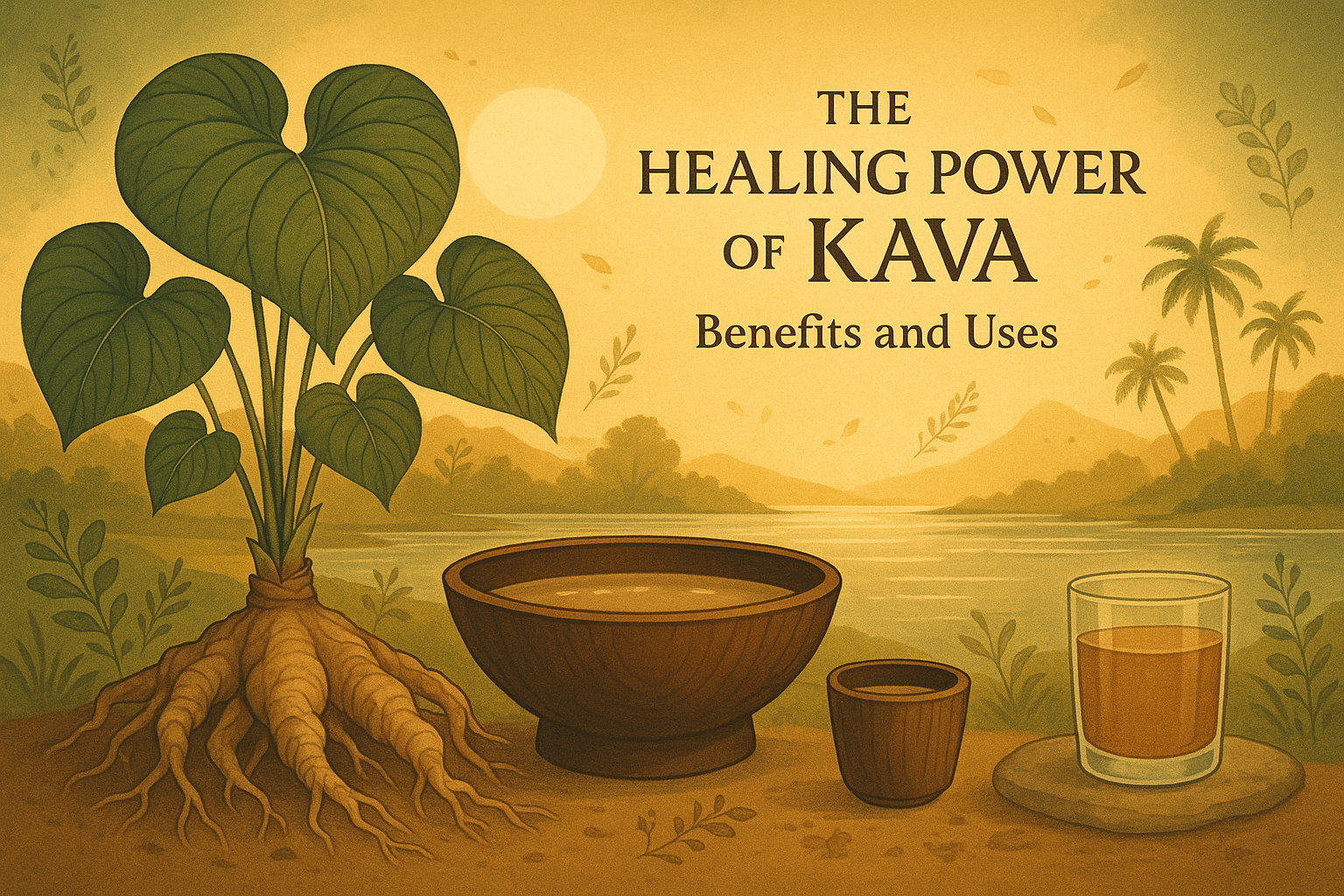Kratom is a natural remedy that has gained popularity for its potential to relieve pain and manage anxiety. It comes from Southeast Asia and has been used for centuries for its healing properties. The active compounds in kratom, such as mitragynine and 7-hydroxymitragynine, interact with opioid receptors in the brain, which may be why it works as a painkiller and anxiety reducer.
Key Takeaway: This article will explore the potential benefits of using kratom for pain relief and anxiety management. We will also look at safety concerns to give you a complete picture of this natural remedy.
While many people have reported positive experiences with using kratom for pain and anxiety, it's important to be cautious. Talking to a healthcare professional before starting any new treatment is always a good idea.
Understanding Kratom
Kratom, scientifically known as Mitragyna speciosa, is a tropical tree native to Southeast Asia, particularly Thailand, Indonesia, Malaysia, and Papua New Guinea. Traditionally, the leaves of this plant were used by local farmers and laborers to combat fatigue and increase productivity. Chewing the leaves or brewing them into tea provided a stimulating effect that helped endure long hours of work.
Key Alkaloids in Kratom
Kratom's unique properties are attributed to its active alkaloids, primarily mitragynine and 7-hydroxymitragynine. These compounds interact with the brain's opioid receptors, similar to how morphine and other opioids do.
- Mitragynine: The most abundant alkaloid in kratom. It is known for its dual action—providing stimulant effects at lower doses and sedative effects at higher doses.
- 7-Hydroxymitragynine: Although present in smaller quantities, this alkaloid is significantly more potent than mitragynine. It binds strongly to mu-opioid receptors, which are crucial for pain relief.
These alkaloids' interaction with opioid receptors explains why kratom has gained popularity as a natural remedy for pain and anxiety. However, it's essential to understand that while these interactions can provide therapeutic benefits, they also come with potential risks and side effects.
By understanding kratom's origins and its primary active compounds, you can better appreciate its potential uses and limitations.
The Science Behind Kratom's Potential for Pain Relief and Anxiety Management

Kratom has the potential to be a natural remedy for pain relief and anxiety management. Its effects on the brain's receptors are what make it unique. In this section, we'll explore how kratom works and why it may be effective in alleviating pain and reducing anxiety.
How Kratom Relieves Pain
Kratom contains two main alkaloids, mitragynine and 7-hydroxymitragynine, which are responsible for its pain-relieving properties. These alkaloids interact with mu-opioid receptors in the brain, producing similar effects to traditional opioids but with potentially fewer side effects.
Here's how kratom's pain relief mechanism works:
- Mu-opioid receptor interaction: Mitragynine and 7-hydroxymitragynine bind to these receptors, leading to pain relief. This interaction is similar to that of morphine and other opioid drugs.
- Anti-inflammatory effects: Some studies suggest that kratom may reduce inflammation, which contributes to pain relief. This anti-inflammatory property can be particularly beneficial for conditions such as arthritis or chronic back pain.
How Kratom Helps with Anxiety
In addition to its pain-relieving properties, kratom may also have benefits for managing anxiety. The exact mechanisms are still being studied, but here's what researchers have found so far:
- Serotonergic pathways: Kratom's alkaloids may influence serotonin levels in the brain, which can contribute to a calming effect. This mechanism is similar to how certain antidepressants work, potentially making kratom effective for anxiety disorders.
- GABAergic system interaction: There is evidence suggesting that kratom might interact with the GABA (gamma-aminobutyric acid) system, enhancing its anxiolytic effects. The GABA system plays a critical role in regulating mood and anxiety levels.
Other Ways Kratom Works
Kratom's ability to relieve pain and reduce anxiety goes beyond its interactions with opioid receptors and serotonergic pathways. Here are some additional mechanisms that contribute to its overall efficacy:
- Modulating the adrenergic system: Kratom may impact adrenergic receptors, which are involved in the body's fight-or-flight response. By modulating these receptors, kratom could help reduce stress and anxiety.
- Influencing dopamine levels: Some research indicates that kratom might affect dopamine levels in the brain. Dopamine is associated with mood regulation, reward, and pleasure, which can indirectly affect both pain perception and anxiety levels.
The Role of Case Studies and Research
While scientific research on kratom is still limited, many users have reported positive experiences with using kratom for pain relief and anxiety management. Scientific studies have also started to support these claims:
A study published in the Journal of Medicinal Chemistry noted that 7-hydroxymitragynine exhibited potent analgesic effects without significant respiratory depression, a common side effect of conventional opioids.
This promising research highlights the potential benefits of kratom as a natural alternative for managing pain and anxiety. However, it's important to note that more studies are needed to fully understand its effectiveness and safety.
Key Takeaways
Here are the main points to remember about kratom's potential for pain relief and anxiety management:
- Kratom's primary alkaloids interact with mu-opioid receptors to provide pain relief.
- Its anti-inflammatory properties further enhance its analgesic effects.
- The anxiolytic properties of kratom are thought to be mediated by its interactions with serotonergic pathways in the brain.
- Additional mechanisms involving the adrenergic and dopaminergic systems contribute to its overall efficacy.
Understanding these mechanisms helps clarify why many individuals turn to kratom for natural pain relief and anxiety management. As research continues to evolve, our comprehension of kratom's full potential will undoubtedly expand.
1. Kratom Strains for Pain Relief: Red Vein and Bali Kratom
Kratom strains, each with unique alkaloid profiles, can significantly vary in their effects. Understanding these differences allows you to choose the right strain for your specific needs, particularly for pain relief.
The Concept of Different Kratom Strains
Kratom strains are typically classified based on two factors:
- Vein Color: This refers to the color of the vein running through the leaf, which can be red, green, or white.
- Origin: The geographical region where the kratom is grown, such as Bali, Malay, or Maeng Da.
These classifications are not merely cosmetic; they influence the plant's alkaloid content and subsequent effects.
Red Vein Kratom
Red Vein Kratom is one of the most popular choices for pain relief. The red veins and stems indicate a high concentration of 7-hydroxymitragynine, an alkaloid known for its potent analgesic properties.
Potential Benefits:
- Pain Relief: Red Vein Kratom interacts with mu-opioid receptors in the brain, which are crucial for modulating pain pathways.
- Relaxation: Users often report a sense of calm and relaxation, making it suitable for evening use.
- Sleep Aid: Due to its sedative effects at higher doses, it can also help improve sleep quality.
User Experiences:
"I've been using Red Vein Kratom for chronic back pain and have found significant relief without the side effects associated with prescription painkillers." - John D.
Bali Kratom
Bali Kratom is another strain renowned for its effectiveness in managing pain. Originating from Bali, Indonesia, this strain offers a balanced profile that combines analgesic effects with mild euphoria.
Potential Benefits:
- Comprehensive Pain Relief: Bali Kratom's unique alkaloid blend makes it effective against various types of pain, including chronic conditions and acute injuries.
- Mood Enhancement: Besides pain relief, users report improved mood and a sense of well-being.
- Cost-Effective: Generally more affordable than other strains due to its high availability.
User Experiences:
"Bali Kratom has been a game-changer for my arthritis pain. I feel more mobile and less reliant on over-the-counter medications." - Sarah M.
Comparing Red Vein and Bali Kratom
While both strains offer substantial benefits for pain management, they do so through slightly different mechanisms and user experiences:
- Red Vein Kratom tends to be more sedative and is ideal for evening use or when you need to unwind.
- Bali Kratom, on the other hand, provides a balanced effect that can be suitable for both day and night use.
Choosing between these strains often comes down to personal preference and specific needs. If you're looking for something that offers robust pain relief with added relaxation benefits, Red Vein might be your go-to. For those who prefer a
2. Using Kratom for Anxiety: Green Malay and Maeng Da Kratom
Kratom strains can vary significantly in their effects, which makes it essential to choose the right strain for specific needs. When it comes to managing anxiety, two strains stand out: Green Malay and Maeng Da Kratom.
Understanding Different Kratom Strains
Kratom strains are typically categorized based on the color of the vein in the leaves: red, green, or white. Each color signifies different alkaloid profiles that contribute to varied effects. For example:
- Red Vein: Typically used for pain relief and relaxation.
- Green Vein: Known for balanced effects, providing both energy and pain relief.
- White Vein: Often used for stimulant and euphoric effects.
The region where kratom is grown also influences its properties. Strains like Green Malay and Maeng Da are specifically noted for their potential benefits in alleviating anxiety.
Green Malay Kratom
Green Malay Kratom is praised for its long-lasting effects and balanced profile. It is often preferred by those seeking relief from anxiety due to its ability to provide calmness without excessive sedation.
Key Features of Green Malay Kratom:
- Mood Enhancement: Users report a noticeable uplift in mood, which can help counteract feelings of anxiety and stress.
- Balanced Energy: Unlike other strains that may cause drowsiness or overstimulation, Green Malay offers a balanced energy boost that keeps you alert yet calm.
- Prolonged Effects: The effects of Green Malay tend to last longer compared to other strains, making it a go-to option for sustained anxiety relief.
Example User Experience: "I've been dealing with social anxiety for years. Green Malay has been a game-changer for me. It helps me stay calm during social events without feeling overly sedated."
Maeng Da Kratom
Maeng Da Kratom is another popular strain known for its potent effects. Originating from Thailand, this strain is often recommended for those who need strong yet smooth anxiety relief.
Key Features of Maeng Da Kratom:
- High Potency: Maeng Da is one of the most potent kratom strains available, making it effective even at lower doses.
- Mental Clarity: Users often experience improved focus and mental clarity, which can help alleviate anxious thoughts.
- Euphoric Effects: The euphoric properties of Maeng Da can contribute to an overall sense of well-being and reduced anxiety levels.
Example User Experience: "Maeng Da has helped me manage my generalized anxiety disorder (GAD). I feel more focused and less overwhelmed by my thoughts."
Choosing Between Green Malay and Maeng Da
Both strains offer unique benefits, but choosing between them depends on your specific needs:
- If you seek a more balanced effect with prolonged duration, Green Malay might be the better choice.
- For those needing potent relief with added mental clarity, Maeng Da could be more suitable.
Understanding the different kratom strains allows you to make informed decisions about which one might best suit your needs for managing anxiety. Both Green Malay and Maeng Da have shown promise based on user experiences, providing viable options for those seeking natural remedies for anxiety relief.
Other Potential Benefits of Kratom
Kratom offers more than just pain relief and anxiety management. Many users have reported experiencing mood-enhancing and energizing properties from this natural herb. These additional benefits are particularly appealing to those seeking a holistic approach to mental well-being and daily vitality.
Mood Enhancement
Users often describe a noticeable uplift in their mood after consuming kratom. This effect is attributed to the interaction of kratom's alkaloids with various neurotransmitter systems in the brain, which can potentially lead to an increase in feelings of well-being and contentment.
Energy Boosting
Kratom is also noted for its potential as an energy booster, especially at lower doses. This stimulating effect can help improve focus, motivation, and physical energy levels, making it a popular choice among individuals looking to enhance their productivity or combat fatigue.
While these user experiences are encouraging, it is essential to recognize that more research is needed to fully understand the mechanisms behind kratom's mood-enhancing and energizing effects. Until then, it's advisable to approach kratom use with caution and mindfulness.
The Controversy Surrounding Kratom: Legal Status and FDA Concern s
s
Current Legal Status of Kratom
The legal status of kratom varies widely around the world. This reflects ongoing debates about its safety and potential benefits. Here's a breakdown of its status in different regions:
Southeast Asia
In Southeast Asia, where kratom has traditional roots, countries like Thailand have legalized its medicinal use. They recognize its cultural significance and possible health benefits.
However, other nations in the region such as Malaysia and Myanmar have strict bans in place. They are concerned about addiction and misuse associated with kratom.
United States
In the United States, kratom's legality is a complex issue with different regulations in each state:
- States with Bans: Alabama, Arkansas, Indiana, Rhode Island, Vermont, and Wisconsin have completely outlawed kratom.
- States with Regulations: States like Arizona, Georgia, Nevada, and Utah allow kratom but under specific regulations to ensure quality and consumer safety.
- Pending Legislation: Several states are considering new laws that could either restrict or protect kratom sales based on ongoing research and public opinion.
FDA's Stance on Kratom
The U.S. Food and Drug Administration (FDA) has expressed significant concerns regarding kratom:
"Kratom is an opioid; it’s addictive; it can lead to death," asserts the FDA in multiple public statements.
Their primary concerns include:
- Potential for Abuse: The FDA classifies kratom as having similar properties to opioids. This highlights its potential for abuse and dependence.
- Contaminants: Reports of contaminants in kratom products have raised alarms. Issues include heavy metals like lead and arsenic, as well as microbial contamination such as salmonella.
The FDA has also issued warnings to several companies marketing kratom products with unproven claims about their ability to treat medical conditions. These actions underscore the need for stringent oversight and quality control in the kratom market.
Kratom legality remains a contentious issue globally. While some regions recognize its potential medicinal uses, others ban it outright due to safety concerns. The FDA raises alarms on potential abuse and contaminants in kratom products.
Is Kratom Safe to Use? Understanding the Risks and Side Effects
When it comes to kratom safety, responsible use is crucial. Avoiding excessive doses is essential to minimize potential adverse effects.
Common Side Effects
Users often report several side effects associated with kratom, including:
- Nausea
- Constipation
- Dizziness
- Dry mouth
These symptoms can vary in intensity depending on the dosage and individual sensitivity. Starting with a low dose and gradually increasing as needed can help mitigate these side effects.
Risk of Addiction and Withdrawal
Kratom's active compounds, mitragynine and 7-hydroxymitragynine, interact with opioid receptors in the brain. This interaction raises concerns about the potential for addiction and withdrawal symptoms. While kratom dependence is possible, studies suggest that its severity tends to be lower compared to traditional opioids.
Withdrawal symptoms may include:
- Irritability
- Insomnia
- Muscle aches
- Runny nose
For those considering kratom for pain or anxiety relief, understanding these risks is essential. Consulting a healthcare professional can provide personalized guidance tailored to individual health needs.
Responsible Use Guidelines
To minimize risks:
- Start with a low dose: Gradually titrate upwards if needed.
- Monitor your body's response: Pay attention to any adverse effects.
- Avoid mixing with other substances: This reduces the risk of harmful interactions.
By following these guidelines, you can better navigate the complexities of kratom use while being mindful of its potential risks.
Guidelines for Using Kratom as a Natural Remedy: Dosage and Precautions
General Recommendations on Kratom Dosage
When considering kratom for pain or anxiety, responsible use is essential. Starting with a low dose and gradually increasing it is the safest approach to find your optimal dosage without adverse effects.
- Begin with a low dose: For new users, starting with 1-2 grams of kratom is recommended. This allows your body to acclimate to the substance.
- Gradual titration: If you don't experience the desired effects, increase the dosage by 0.5 grams every 3-4 days. This gradual titration helps avoid sudden onset of side effects.
- Effective range: Most users find effective doses between 3-5 grams for moderate effects. Higher doses (5-8 grams) may be needed for severe pain or anxiety but come with increased risk of side effects.
- Maximum dose considerations: Exceeding 8 grams per dose can significantly raise the risk of adverse reactions such as nausea, constipation, and dizziness. It's crucial to stay within safe limits.
Populations That Should Exercise Caution
While kratom can offer benefits, certain populations should be particularly cautious or avoid its use entirely.
Pregnant Women
Pregnancy introduces several physiological changes that can alter how substances affect the body. The safety of kratom during pregnancy has not been established, and there are potential risks to both the mother and the fetus.
"Pregnant women should avoid using kratom due to potential risks and lack of research on its safety during pregnancy."
Individuals With a History of Substance Abuse
Kratom interacts with opioid receptors in the brain, which raises concerns about its potential for dependence and abuse, especially among individuals with a history of substance misuse.
"Those with a history of substance abuse should consult healthcare providers before using kratom to assess their individual risk factors."
Additional Precautions
- Hydration: Kratom can cause dehydration, so maintaining adequate fluid intake is vital.
- Dietary considerations: Taking kratom on an empty stomach may intensify its effects but also increase nausea risk. A light meal beforehand can mitigate this.
- Combining substances: Avoid combining kratom with other psychoactive substances or alcohol due to potential interactions that could exacerbate side effects.
Monitoring and Adjustments
Regularly assessing your response to kratom is important for long-term use. Note any changes in effectiveness or side effects and adjust your dosage accordingly. Consulting a healthcare professional can provide personalized guidance tailored to your specific needs and conditions.
Responsible use starts with understanding these guidelines and making informed decisions about dosage and precautions. By starting low and going slow, you minimize risks while exploring the potential benefits kratom offers for pain relief and anxiety management.
Seeking Professional Guidance: Importance of Consulting a Healthcare Provider
While this article provides detailed information on the potential uses of kratom for pain and anxiety, it should not be used as a substitute for professional medical advice. The complexities surrounding kratom, such as its varying effects and possible side effects, necessitate personalized guidance from a qualified healthcare provider.
Key Points to Consider:
- Individual Health Factors: Each person’s health condition is unique. What works for one individual may not be appropriate for another. Consulting a healthcare professional ensures that you receive advice tailored to your specific health needs.
- Potential Interactions: Kratom can interact with other medications and substances. A healthcare provider can help assess potential interactions to avoid adverse effects.
- Monitoring and Adjustments: Regular consultations allow for ongoing monitoring and adjustments in dosage or usage patterns, ensuring the safest and most effective use of kratom.
Why Consult a Healthcare Professional?
- Expertise in Medical Conditions: Professionals have the experience and knowledge to evaluate whether kratom is appropriate for your condition.
- Risk Management: They can help manage risks associated with kratom use, including side effects and potential dependency issues.
- Legal and Safety Concerns: Awareness of the legal status and safety profile of kratom in your region is crucial, something a healthcare provider can offer guidance on.
Seeking medical advice before incorporating kratom into your regimen is essential for safe and effective use. Always prioritize professional input over anecdotal evidence for your well-being.
The Future of Kratom Research and Regulation
Research on kratom is still in its early stages, so it's important to continue conducting scientific studies to better understand its potential benefits and risks. However, there are some challenges that researchers face, such as finding enough funding and designing studies that accurately capture the effects of kratom. In order to fully grasp the long-term effects of kratom use and establish safe dosage recommendations, it's crucial to conduct thorough clinical trials.
Efforts are currently underway to promote sensible regulation that prioritizes product quality and consumer safety. Advocates argue against overly restrictive regulations that could hinder access for those who could potentially benefit from kratom. Instead, they propose the following measures:
- Ensuring that products are free from any harmful substances.
- Requiring accurate information on alkaloid content to be included on product labels.
- Monitoring any negative effects or potential patterns of misuse.
By implementing balanced regulations like these, we can help minimize the risks associated with kratom while still providing a framework for responsible usage. It's essential for scientists, healthcare professionals, and regulatory agencies to work together in order to strike this balance effectively.
Conclusion
Kratom is a natural remedy that shows promise in managing pain relief and anxiety relief. However, more research is needed to fully understand how it works and its long-term effects.
Here are some important tips for using kratom safely:
- Start with small doses.
- Observe how your body reacts.
- Purchase kratom from trusted sellers to reduce the chances of getting contaminated or adulterated products.
For those who have not found enough help from traditional treatments, kratom could be a potential solution. It is important to use it responsibly and under the supervision of a medical professional in order to maximize its benefits while minimizing any risks involved.
FAQs (Frequently Asked Questions)
What is kratom and how is it used as a natural remedy?
Kratom is a natural remedy that has been traditionally used for pain relief and anxiety management. It is derived from the leaves of the Mitragyna speciosa tree, native to Southeast Asia. The leaves can be chewed, brewed into tea, or ground into a powder for consumption.
What are the key alkaloids found in kratom and how do they interact with the body?
The key alkaloids found in kratom are mitragynine and 7-hydroxymitragynine. These alkaloids interact with opioid receptors in the brain, potentially providing pain relief and anxiety management effects.
Which kratom strains are commonly associated with pain relief?
Red Vein and Bali Kratom are popular strains known for their potential to alleviate pain based on user experiences. These strains are often favored by individuals seeking natural alternatives for pain management.
Which kratom strains are commonly associated with anxiety relief?
Green Malay and Maeng Da Kratom are popular strains known for their potential to provide anxiety relief based on user experiences. These strains are often sought after by individuals looking for natural remedies to manage anxiety.
Is kratom safe to use, and what are the potential risks and side effects?
Kratom can be safe when used responsibly, but it's important to be aware of potential adverse effects. Common side effects include nausea and constipation. Additionally, while it is possible to develop dependence on kratom, the severity appears to be lower compared to traditional opioids.
Why is it important to consult a healthcare professional before using kratom?
Consulting a healthcare professional is crucial because individual health conditions and medication interactions can impact the safety and efficacy of using kratom. A qualified healthcare provider can offer personalized guidance and monitor any potential risks associated with kratom use.







Leave a comment
This site is protected by hCaptcha and the hCaptcha Privacy Policy and Terms of Service apply.